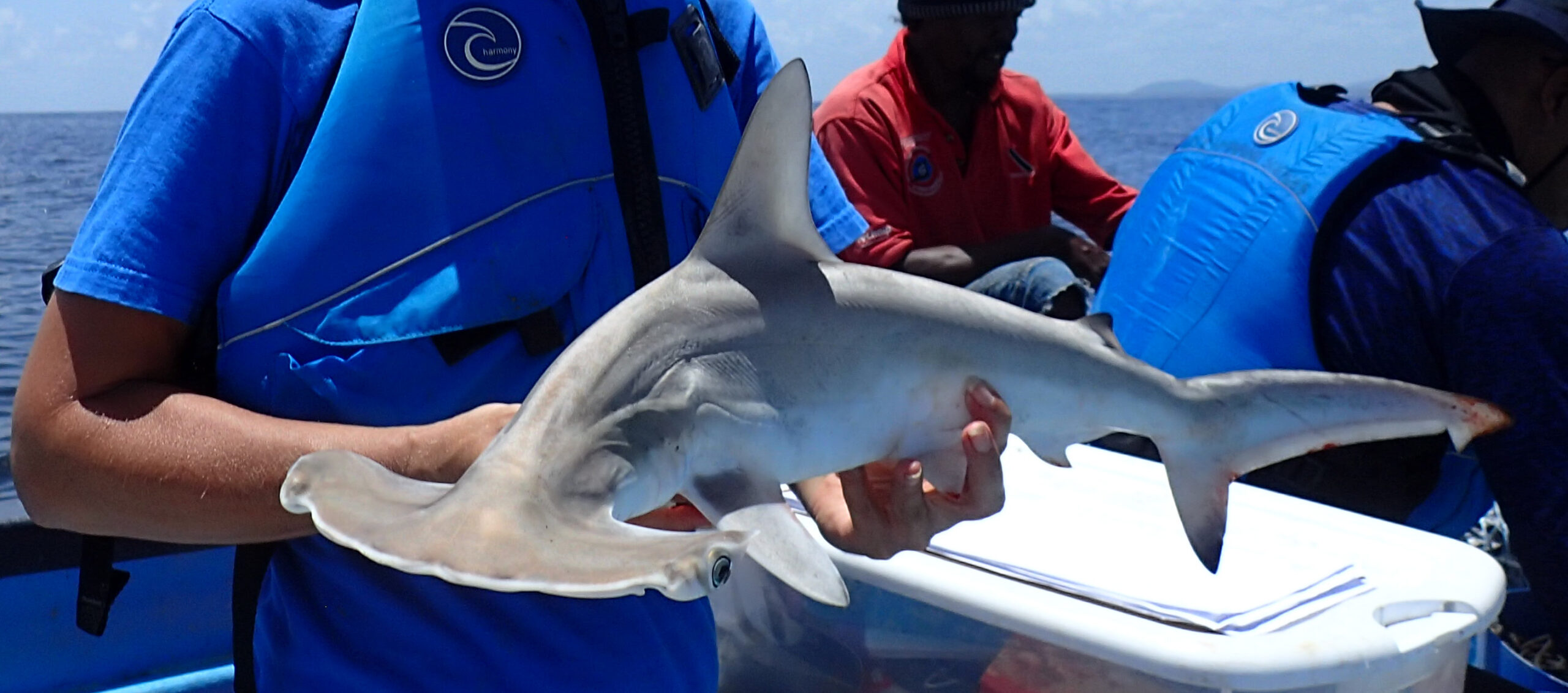The challenges of shark fishing
Covid-19, gender biases, rough seas and more!
Strict Covid-19 restrictions made starting our project to identify the nursery areas where juvenile Scalloped Hammerheads occur around Trinidad difficult. We set out to collaborate with local fishers, but remote work with not-so-tech-savvy fishers (many of whom do not own computers, tablets or smartphones) was nearly impossible. However, as curfews and ‘stay at home’ orders eased up, we have been able to visit landing sites and meet one on one with fishers in person across Trinidad; the larger island of the twin-island state of Trinidad and Tobago in the southeastern Caribbean Sea just off the coast of Venezuela.
Another obstacle was a logistical issue. Covid-19 restrictions greatly limited imports and led to depleted fishing gear stocks island-wide. The supplies we needed to make a long line to catch and tag juvenile hammerheads were difficult to source. I had to get creative and use what I could find to build the longline that consists of 1 km of line and 100 gangions (monofilament leaders, each with a circle hook on one end and a clip on the other) that we clip on every 10 m and low and behold it works!

Scalloped hammerhead caught on a longline. Photo © Kelly Kingon.
With campus also closed due to Covid-19, my home became my office and laboratory, much to my husband’s chagrin! Despite his disapproval of the near-constant fishy smell, he still helped with loading, unloading and washing the gear when no one else could assist. I do have lots of help though, and as restrictions have lifted, the 30+ volunteers I recruited and trained have been able to assist with various aspects of the project. The training started off virtually but as more of us gain access to vaccinations, it has expanded into the field. Luckily fishing was deemed an essential activity so we have been able to survey the fish landing sites and fish markets for hammerhead sharks when most other businesses were shut down. Some of the landing sites we had planned to survey were no longer functioning as a result of Covid-19 restrictions, but through trial and error, we reassessed the areas to target for shark catches and narrowed them down to 20 sites that we attempt to visit monthly. Sets of volunteers have been assigned to sample certain landing sites based on which sites are closest to them. Consistent monthly assistance from the volunteers has been hard to keep up though.
We have established ongoing collaborations with many fishers and vendors around Trinidad. They are now accustomed to our monthly sampling and most of them are happy to assist, share their knowledge and learn more about the sharks’ biology. Some even go the extra mile to call when they catch sharks and report some of the catch details. In contrast, contacting fishers to take us out fishing has not been so easy. Communicating with them is very difficult as they often lose or soak their phones at sea. Other fishers recruit their wives or girlfriends to do the communication. In these cases, no one was calling me back. One of the fishermen made me realize that these women did not want their men going out to sea with a foreign woman! This was why the fishers or their significant others were not calling me back! I then delegated my male PhD student to call the fishers, which is yielding a much higher response and trip rate!
Many fishers have agreed to assist us but organizing trips around their health issues, boat problems, scheduling conflicts and the weather has been tough. The weather, in particular, has been very rough resulting in a lot of seasickness for my volunteers! After not throwing up my whole life while at sea, Trinidad waters have even taken their toll on me! We are still catching sharks though and a recent trip yielded 36 sharks including a juvenile scalloped hammerhead. Stay tuned for our next blog where we will discuss more on what we are catching!
